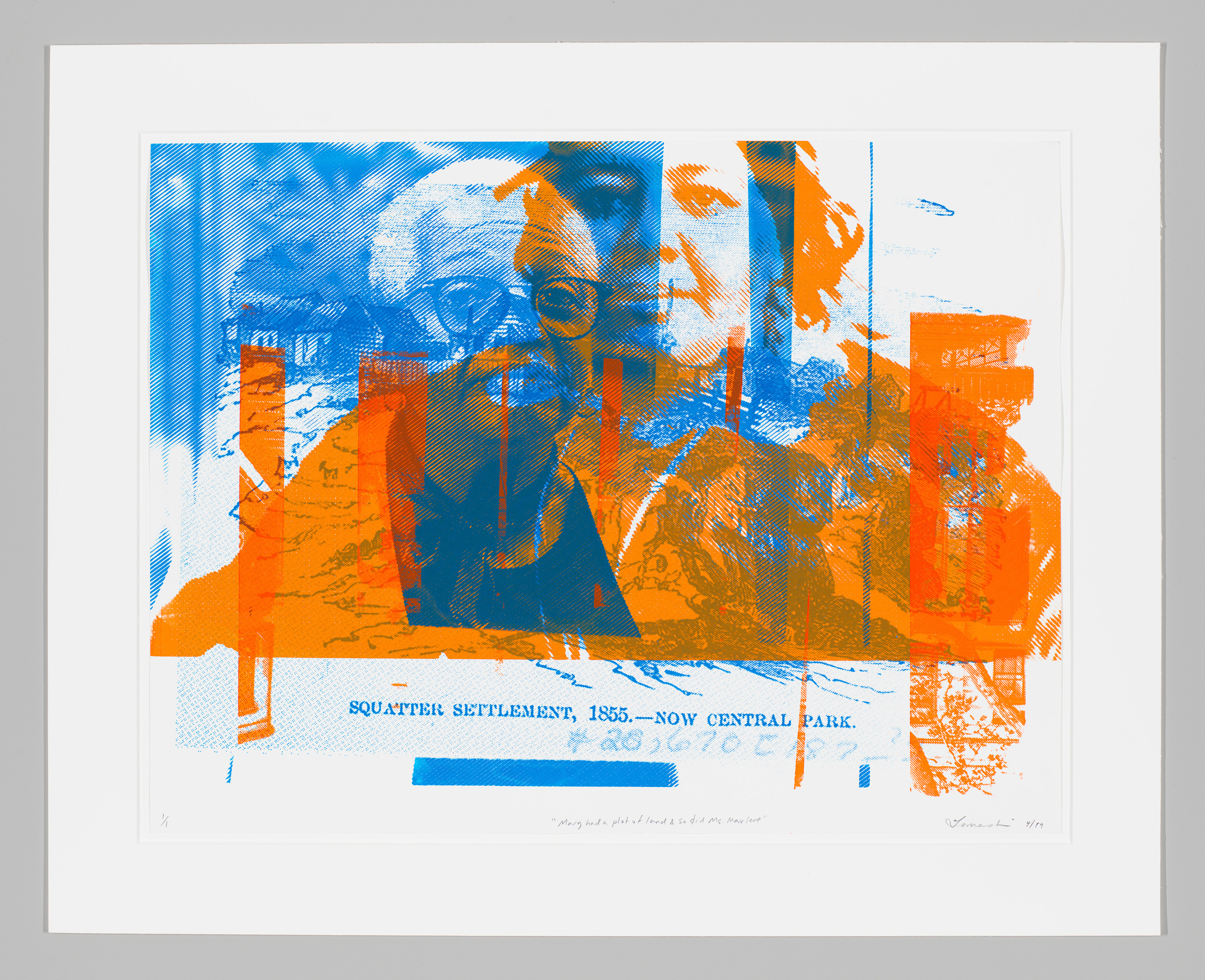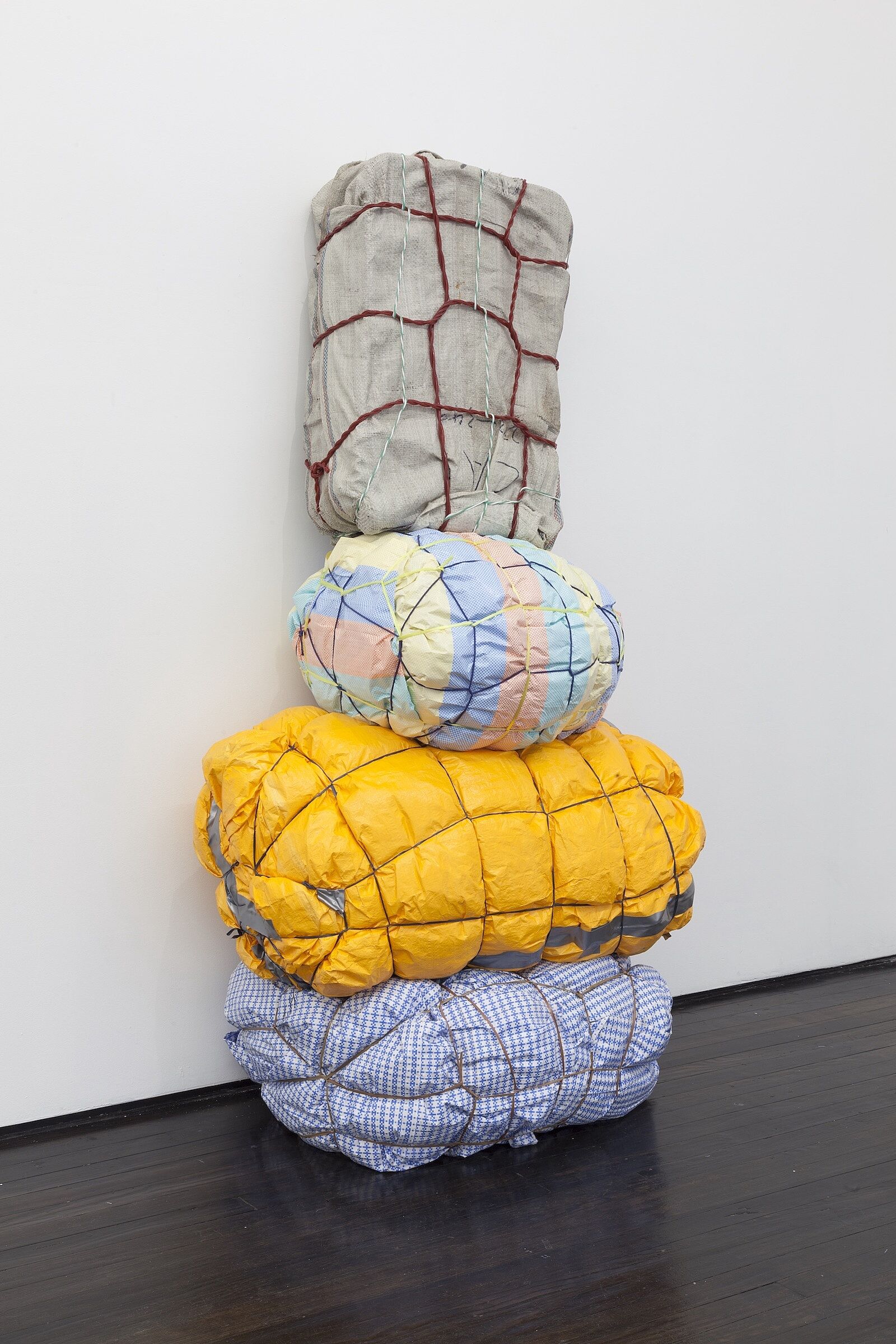Tomashi Jackson
May 13, 2019
0:00
Tomashi Jackson
0:00
Tomashi Jackson: Color is not static. The perception of color is actually a relative concept and a relative phenomenon.
Narrator: Tomashi Jackson.
Tomashi Jackson: A part of how I work using color to visualize narratives of public concern, attempting to collapse histories using archival photography and contemporary photography, breaking them down into half-tone lines, and creating visual circumstances in which they become collapsed. The histories literally collapse.
This current body of work seeks to visualize stories of dispossession and displacement in New York City, specifically the displacement of Black and Brown communities. While reading the investigative journalism of Stephen Witt and Kelly Mena in Kings County Politics, I learned about the current situation of the Third-Party Transfer Program that's being used to justify sudden foreclosures and seizures of properties, fully paid for properties, mortgage-free properties in Black and Brown communities all around New York City.
City representatives say that their motivation is to restore the neighborhoods and to improve them and create “affordable housing” by displacing people who already live there. These aren't necessarily homes that are burned out and sitting vacant. They're fully occupied with tenants and residents.
I immediately thought of the story of Seneca Village, the collection of Black-owned properties that was razed in 1858 for the creation of present-day Central Park.
In 2019 Biennial.


